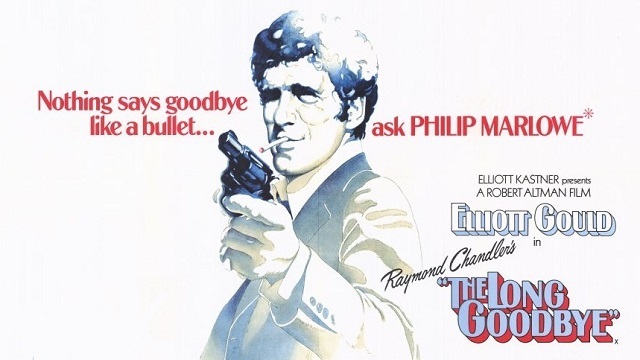Todd Berliner wrote that revisionist auteur films of the 70’s tended to either bend or break genre. If a film bends genre, it distorts generic elements just enough to provoke surprise or shock – think the ending of Chinatown, for instance. Berliner goes on to rail against genre breaking, the self-aware incredulity towards established genres, with The Long Goodbye as a prominent example. Altman’s 1973 neo-noir can certainly come off as irritatingly tongue-in-cheek, especially with the title theme and its million arrangements, but The Long Goodbye proves to be one of the best examples of how to make too-smart-for-this cinema actually cool. Start with a smooth performance by the underrated Elliott Gould, a man who can wholly embody Humphrey Bogart’s humble charm even when his character, Philip Marlowe, proves to be completely ineffectual. Mix with a pulpy plot that masterfully straddles the line between light-heartedness and heavy intrigue, most effectively in a scene of sudden violence. Pour in some of that jazzy Altman style that continues to make him a critics’ favourite. Finally, sprinkle humour throughout, much involving Marlowe’s adorable and expressive cat. Blend thoroughly, and you’ll receive an undoubtedly posturing film, but one that postures with seductive swagger and an undeniable sense of cool.
(It is also worth recommending for one of the most nonchalantly bizarre cameos in cinema history. You’ll know when it happens.)
This review is part of Oldflix, a series of articles that highlights films soon to be eliminated from Netflix Streaming.


